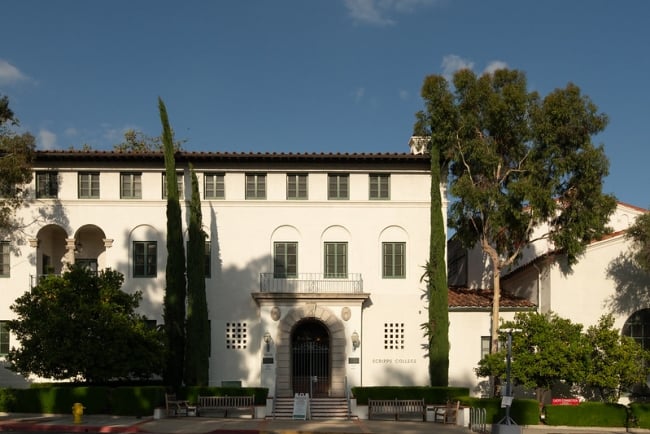You have /5 articles left.
Sign up for a free account or log in.

Courtesy of Scripps College
Scripps College announced Wednesday that it will close its campus and conduct the fall semester completely online as COVID-19 case counts near its home of Claremont, Calif., continue to rise.
Lara Tiedens, the college's president, made the announcement as colleges across the country wrestle with diametric external pressures: a worsening public health crisis and the Trump administration’s insistence that colleges reopen in person this fall.
“We need to be socially responsible players in this world,” Tiedens said. “And that means understanding what the nature of the public health crisis is, and what responsible behavior is in that context.”
A handful of colleges -- including Harvard University and fellow Claremont college Pomona College -- have recently announced virtual fall semesters. Scripps differs from many of the private institutions that previously announced online-heavy fall plans in that its endowment, although considerable at $375 million in 2019, isn't measured in the billions. Other types of institutions are going virtual this fall as well. West Chester University in Pennsylvania announced Friday that it will go almost entirely online this fall, citing the rising coronavirus case count in the United States.
“Today, the U.S. surpasses three million cases of the coronavirus and reports more than 60,000 new cases in a single day,” Christopher Fiorentino, West Chester’s president, wrote in the Friday announcement. “WCU cannot ignore the potential danger of bringing thousands back to campus. Accordingly, our plans for the fall semester must adjust to this new reality.”
The city of Claremont, where Scripps and Pomona are both located, is part of Los Angeles County in California. As of Friday, Claremont, with a population of about 36,000, reported 196 total COVID-19 cases. Los Angeles County reported 1,777 new cases on Friday and 50 new deaths, bringing its total to 124,738 cases and 3,689 deaths, according to public health data.
Scripps will not be bringing students back to campus. Instead, they’ll have to live and study elsewhere, as dormitories and residential services will remain closed until the spring semester at the earliest.
The online instruction offered this fall will be very different from the forced pivot to virtual learning in the spring, according to Tiedens.
“In the spring, people had to just do,” she said. “They just had to do whatever they managed to put together in a matter of days, and that mostly meant using Zoom.”
Scripps is aiming to keep class sizes at 30 students or fewer. Over the past couple of months, the college offered its first-ever summer classes. The 10 virtual courses helped faculty parse out what worked well online and what didn’t.
“That group of faculty formed a kind of working group about exploring options, educating themselves, educating their colleagues who weren’t teaching in the summer,” Tiedens said. “They were very purposefully trying experiments or new things over the summer to see what ones were particularly effective.”
As of right now, Scripps doesn’t plan to reverse course and bring students back early, but the college will begin work in a few weeks to prepare for an in-person spring semester.
“I can’t imagine midsemester asking students to return, or asking faculty to return to campus. I think it’s just too much of a logistics challenge for too many people in terms of planning their lives,” Tiedens said.
The decision to go virtual is not without consequence. A recent temporary final rule by the U.S. Department of Homeland Security bans international students from remaining in the country if their colleges opt for online-only instruction this fall. Typically, Scripps enrolls about 40 international students each year.
“We’re working hard on that problem, and we don’t know what the resolution will be yet,” Tiedens said about the rule. She did not rule out the possibility that the college could offer one or two in-person courses as a workaround.
For a residential liberal arts college like Scripps, closing the campus to students comes with a significant financial blow. The college decreased tuition for the upcoming academic year, slashing a previously implemented increase and reverting to 2019-20 levels.
The college relies heavily on room and board revenue to support its operating budget. Without it, Scripps will be forced to make cuts, Tiedens said.
So far, the college has implemented a hiring freeze, halted pay increases and cut divisional budgets. Senior leaders also took pay cuts. No faculty or staff members have been laid off or furloughed at this time, but Tiedens said she couldn’t rule out that possibility in the future.
“We would like to avoid it, but we’re not sure we’ll be able to,” she said.
Scripps has also increased its endowment payouts to lessen the financial strain.








